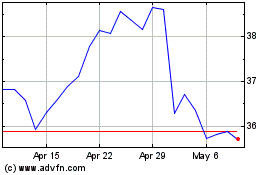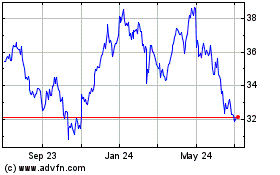Credit Markets: Kraft Debt Sinks After Fitch, S&P Downgrade -- WSJ
February 15 2020 - 3:02AM
Dow Jones News
By Matt Wirz
This article is being republished as part of our daily
reproduction of WSJ.com articles that also appeared in the U.S.
print edition of The Wall Street Journal (February 15, 2020).
Investors dumped bonds of Kraft Heinz Co. Friday when Fitch
Ratings and S&P Global Ratings pushed their ratings of the
company into junk territory following a disappointing earnings
report.
A downgrade by two of the three major ratings firms typically
forces index operators to classify Kraft as below investment grade
and prohibit many bond funds from holding the debt.
Kraft's bond due 2046 fell to about 90 cents on the dollar
Friday from 96 cents Thursday and 101 cents before the earnings
disclosure. About $4.5 billion of the company's bonds traded in the
two days following the disclosure, according to data from
MarketAxess. That figure represents about 20% of the company's $23
billion face amount of bonds outstanding, according to data from
Bank of America Corp.
Fitch and S&P pointed to Kraft's commitment to keep paying
shareholder dividends despite decreased earnings as a risk to
bondholders.
"We believe it's important to Kraft Heinz shareholders to
maintain our dividend during this time of transformation," said
Michael Mullen, senior vice president of corporate affairs for
Kraft. "We also remain committed to reducing leverage over time as
we reposition the company for sustainable growth and returns."
Moody's Investors Service changed the outlook on its Kraft
rating -- currently at the lowest rung of investment grade -- to
"negative" from "stable" on Friday but didn't cut the rating.
The downgrades by Fitch and S&P will likely make Kraft the
largest "fallen angel" to enter the junk-bond market since 2005,
according to research by Bank of America. That change would make
Kraft bonds account for 1.9% of a widely tracked high-yield bond
index, the bank's analysts said.
The food maker's sales have fallen in recent years as consumers
shift away from the processed products that make up its core brands
toward fresher and healthier options.
"The company lost sight of investing to manage long-term trends
facing the business, such as the overall shift toward healthier
eating by Kraft Heinz consumers," said Abigail Ingalls, an analyst
at Breckinridge Capital Advisors, which doesn't own Kraft
bonds.
Treasury bonds rallied Friday after the release of a U.S. retail
sales report that, while reasonably strong, was somewhat
disappointing in its details, according to analysts. The 10-year
bond yield, which falls when prices rise, climbed to 1.587% Friday
from 1.616% Thursday, according to data from Tradeweb.
Sam Goldfarb contributed to this article.
Write to Matt Wirz at matthieu.wirz@wsj.com
(END) Dow Jones Newswires
February 15, 2020 02:47 ET (07:47 GMT)
Copyright (c) 2020 Dow Jones & Company, Inc.
Kraft Heinz (NASDAQ:KHC)
Historical Stock Chart
From Mar 2024 to Apr 2024

Kraft Heinz (NASDAQ:KHC)
Historical Stock Chart
From Apr 2023 to Apr 2024
